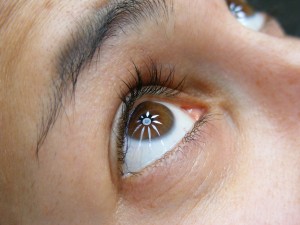FRIDAY, 25 MAY 2012
The newly developed ‘bionic eye’ described in the journal Nature Photonics is a wireless retinal chip teamed with specially designed glasses that record what is happening in front of the wearer. The glasses then fire a corresponding pattern of near infrared light onto the implant which stimulates nerves at the back of the eye and allows the person to see.Although not yet tested in humans, trials have been successful in rats. The thinness of the implant also means that the surgery required to install it is much less invasive when compared with current devices. Currently the chip can ‘see’ up to 10 degrees of visual field which is increased to up to 30 degrees by eye scanning, providing a natural link between eye movement and visual perception.
Dr Keith Mathieson, one of the lead researchers on the project describes the benefits of the new technology. “Age-related macular degeneration is a huge medical challenge and, with an aging population, is continuing to grow. This means that innovative, practical solutions are essential if sight is to be restored to people around the world with the condition.”
Written by Joanna-Marie Howes
doi:10.1038/nphoton.2012.104

